Background
My long-time elmer and friend Chris (KI6CR) talked about the Mystery Antenna for years. I remember looking it up a long time ago and thinking "100', no chance!" I didn't yet have an appetite for it: the space and rigging, nor the social friction at home of deploying such a large, ghastly thing.
But over time I grew tired of deploying my telescoping vertical on the lawn, or my SOTA antenna in the backyard to work a whopping 10 watts. At Field Day 2025, the operators there were clearly big fans. I thought maybe it was time to revisit the idea.
Why The Mystery Antenna?
On paper and socially, it's evident that the antenna is simple and effective across all US amateur radio bands. Affordable to buy or simple to build, the only concern was its beastly 100' presence.
You can read about the plan I cobbled together to literally cripple it across our backyard here:
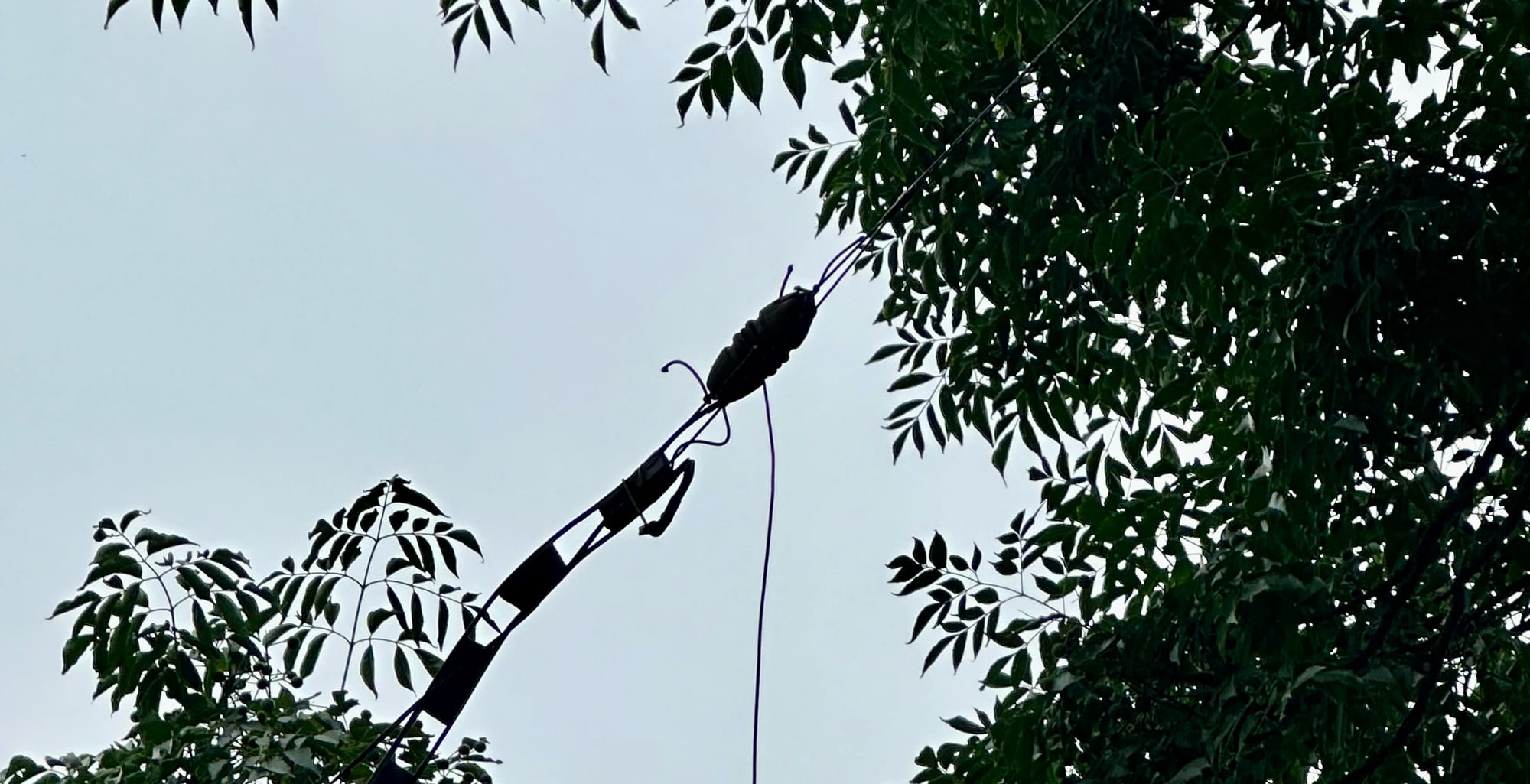
Now have a look at the SWR readings. With a tuner like that of my Yaesu FT-991A, the juice seemed to be worth the squeeze:
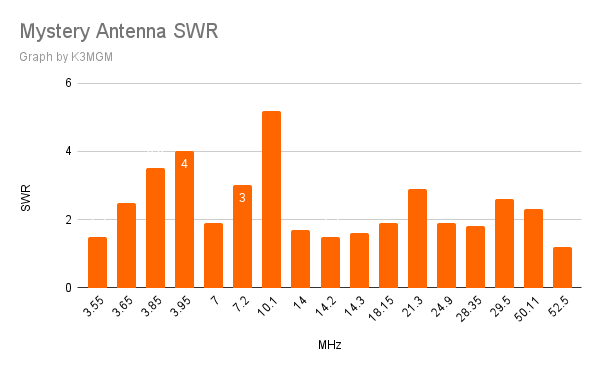
After selling my significant other on the idea, which has thankfully always been fairly easy, I rummaged through my ham box and found everything I needed but the ladder line. $56 at DX Engineering got me the nicest ladder line I've ever worked with, and we were off to the races!
The Mystery Antenna, they say, is named as such because antenna modeling software can't quite make sense of it. If modeling software can't do it, I certainly would have been overwhelmed had I never found this incredibly helpful article by IW5EDI covering the entire process: https://www.iw5edi.com/technical-articles/w5gi-mystery-antenna
The article explains how the antenna does its 'magic', and I'd be doing us all a disadvantage if I tried to echo that. Definitely go read IW5EDI's article above.
Diagram / The Build
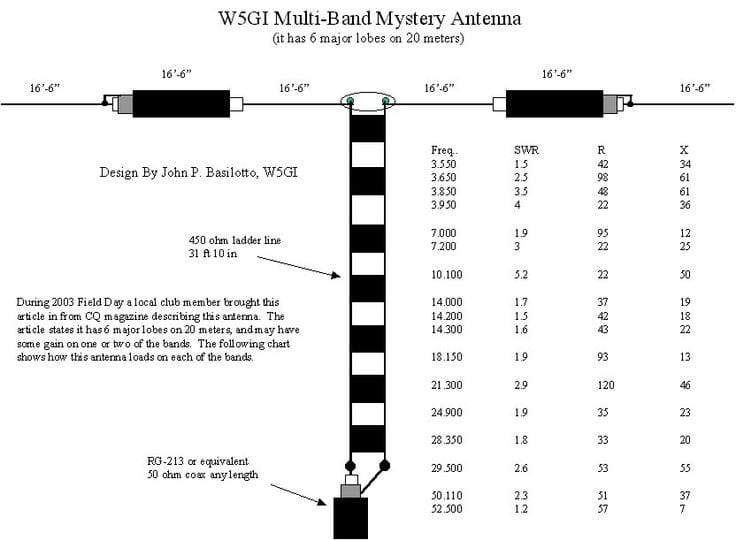
Since the antenna would be hung under a tree with a track record of falling limbs, I decided to build my own rather than be upset when a beautiful professionally-made one ($150) becomes damaged.
Chris offered to 3D print some dogbone insulators that turned out great. Seriously, what a guy!
So I:
- Built the beast exactly as shown above, except I:
- Measured out 99' of guy line rope, raised it with pulleys to chest height, and built the antenna along that. I used zip ties to secure the wire and coax antenna elements to the rope, and I hope that will help it live a nice easy life for years to come
- Measured very odd SWR with Chris’s super cool loaner antenna analyzer. I found that DX Engineering had sent me 10' of extra ladder line for free, to my delight! The 450-ohm ladder line is of course the matching network. FYI, that 10' extra made the SWR sweet spots narrow and centered around lower frequencies than desired. After trimming that, I was (and am) a very happy nerd
Results
Despite having the antenna elevated in a weird manner, literally a crippled beast across the backyard, it performs incredibly well on SSB and FT8 across all bands. If you're able to build/buy, elevate, tune up, and install a W5GI Mystery Antenna, I can't recommend it highly enough.
Next
I haven't been doing HF for very long, and it recently occurred to me that some RF coupling may be happening between the antenna element (bottom, run along the guying rope) and the shackle to the steel rope that holds it in the tree. It doesn't seem to, but maybe don't do that.
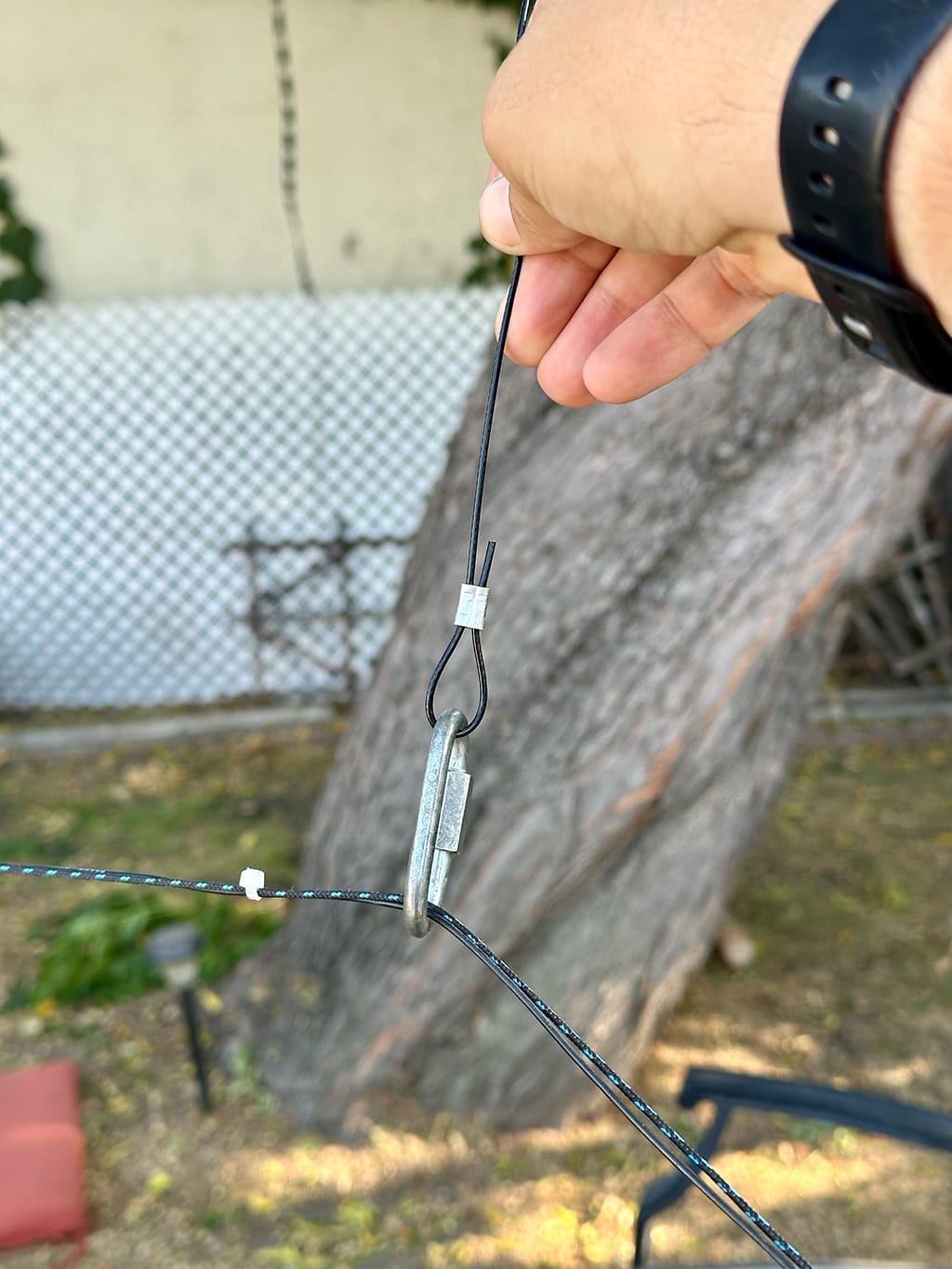
Closing
Please feel free to contact me with any questions or comments as I putz through my amateur radio journey. Thank you for reading thus far 🙂
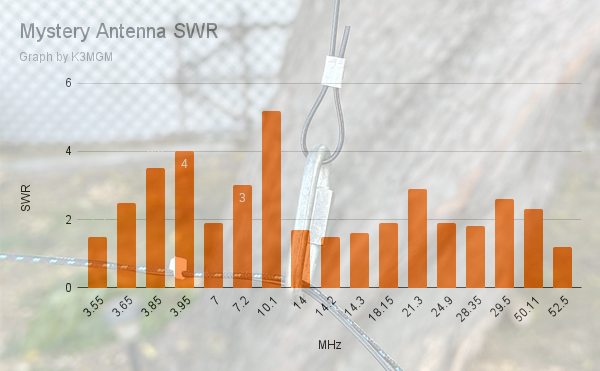

Member discussion: